
Renaissance Era Egg Tempera Technique Artwork w/ E E Kono
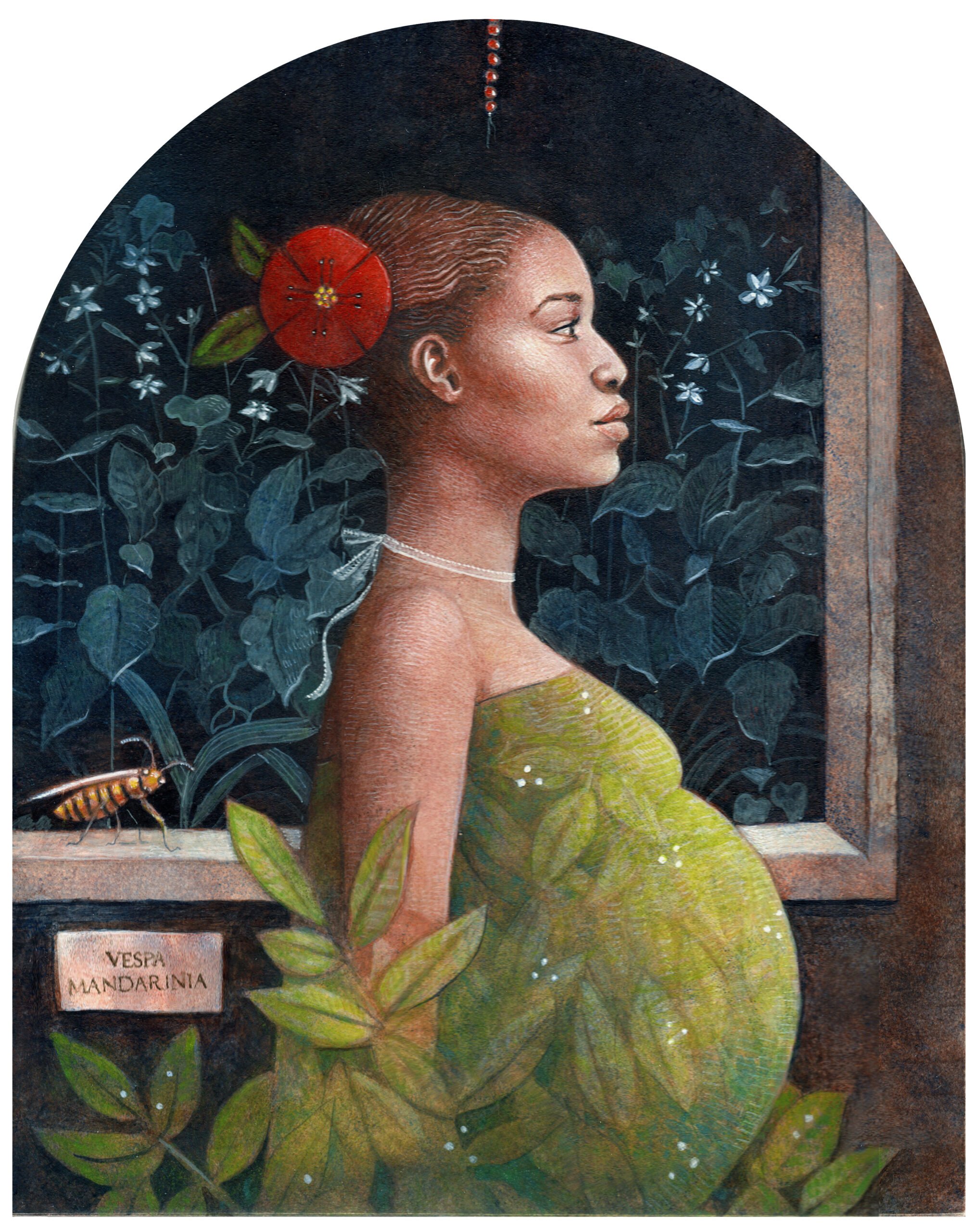

E. E. Kono is a Los Angeles and Iowa-based artist. In her work, she explores the fluidity of culture and time. She employs a visual language that reflects her investigation into the connections between stories, symbols, and archetypes, across cultures and to the natural world.
Growing up, Kono’s family split their year between a diverse international community and small-town, middle America. This nurtured in her a life-long interest in how stories and symbols create interwoven meanings between societies. Initially, this inspired a career in children’s literature, writing and illustrating picture books. Now, her practice favours a slow, meditative process using natural materials chosen for their layered significance.
Kono’s practice explores the fluidity of culture and time. She is interested in how stories and symbols create meaning that’s passed from one society to another, transcending cultures and offering a connection between diverse viewpoints.

Kono works primarily in egg tempera. Each of my paintings begins with a fully rendered metal point drawing on a traditional gesso ground. She chose this method to acknowledge the key role that precious metals have played in the foundation of Western culture as the catalyst of global trade, capitalism, and colonialism. Ground pigments, sourced from across the globe and chosen for their specific historical and geographic significance, are mixed with egg yolk and water. The paint is then applied in hundreds of semi-translucent layers using a slow meditative process that connects directly to artists of the past.
While used for thousands of years, egg tempera is most often associated with the early Renaissance, an era that formed the foundation of the modern world. It’s a period that parallels our own when the introduction of innovative technologies led to wide-ranging social disruption. By returning to the medium, Kono hopes to highlight the cyclical nature of time and our roles in shaping the coming age.
In an exclusive interview with the artist E E Kono, she shares how her childhood travels allowed her to interpret the world. She shares her experience of learning egg tempera techniques from the artist Koo Schadler and why the Renaissance era Egg Tempera technique is her chosen work of medium.
1. Erin, how do feel your childhood framed the artwork that you create today?
For much of my childhood, both of my parents were attending graduate school. We spent our winters in small-town middle America, and our summers in a robust global community. Graduate housing was filled with young families. We had a large gang of kids that were allowed to pretty much run wild. Language, culture, and race were never a barrier. I think the experience focused my attention at an early age on how diverse people interpret the world. It taught me that the meaning of symbols and stories can change depending on an individual’s perspective, and one is no more valid than another.



2. So you studied egg tempera techniques under the guidance of the artist Koo Schadler. Could you share your experience and describe what it was like?
I was so lucky to have Koo as a teacher. She’s developed a masterful technique and is a uniquely capable instructor. She has a brilliant mind, as much a scientist as an artist. Each year she gives several weeklong egg tempera workshops. I was fortunate to attend a couple when I was just transitioning to fine art after a career in illustration.
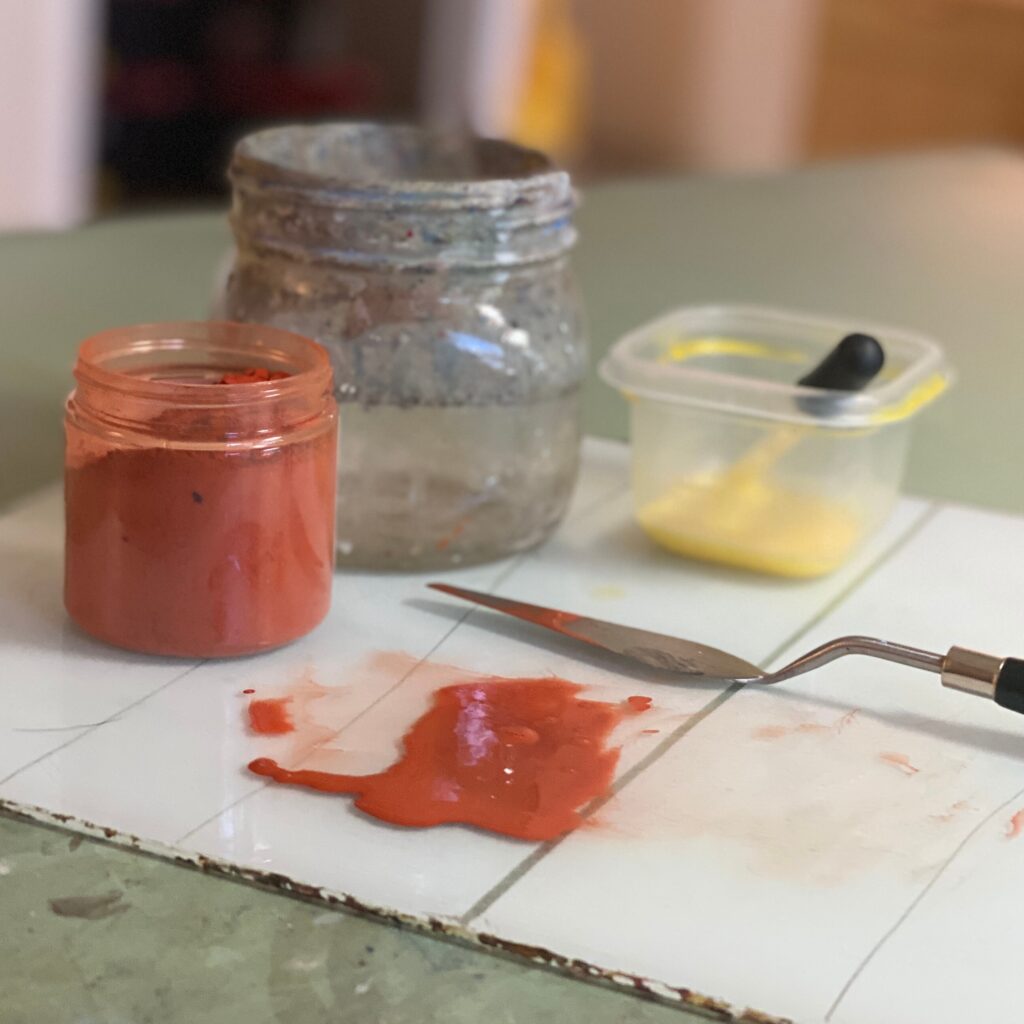
Egg tempera paint is created by combining powdered pigments, egg yolk, and water. The pigments are sourced from specific locations throughout the world. Each one has a unique history of how it was created and how it has been used in the past. Each one also requires a slightly different ratio of egg to pigment for it to correctly temper. Unlike oil, the emulsion dries almost immediately. This means you cannot go back into the paint, wet on wet. But it does allow an artist to quickly build transparent layers. Koo’s technique utilizes sponging, glazing, and scumbling. Over the years I’ve modified what I’ve learned from her to better suit my personality, but without her initial instructions, I’d never have figured it out.
A visual language that reflects her investigation into the connections between stories, symbols, and archetypes, across cultures and to the natural world.
3. Erin, why did you choose Egg Tempera Technique as your medium to work with?
I love Egg Tempera’s connection to the past, to nature, and to diverse places. Each pigment has a unique story. Combining them and layering them in transparent veils somehow integrates all those meanings into the painting and emulates how I see time and place.

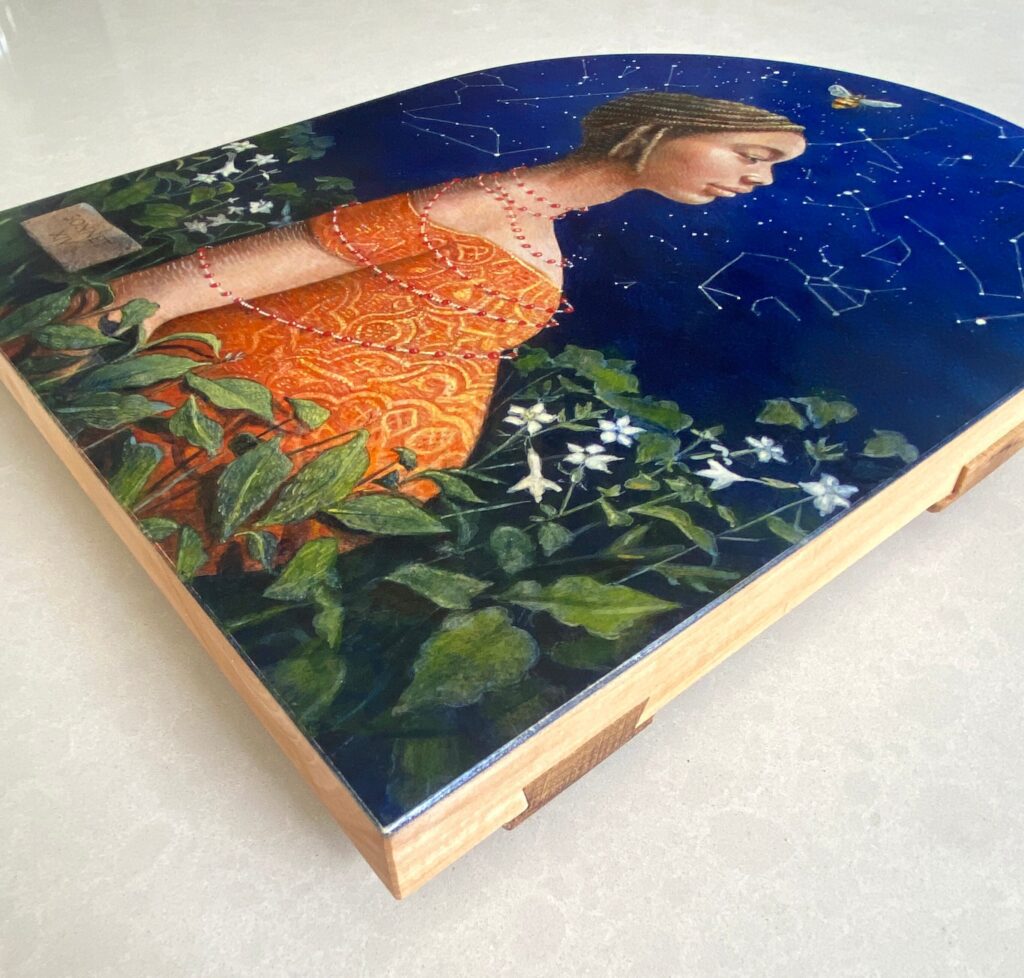
I studied art history as an undergrad and have long been fascinated with the early Renaissance, the last period of Western art when egg tempera was widely popular. It’s an era that parallels our own when the introduction of innovative technologies led to wide-ranging social disruption. By returning to the medium, I hope to highlight the cyclical nature of time and our roles in shaping the coming age. I think of my paintings and drawings as objects rather than images. The materials and processes are essential components, providing a tactile experience that can be seen as a counterpoint to the digital world.
4. The gun-metal drawings look incredible. Can you share the creative process for it?
Each of my paintings begins with a fully rendered metal point drawing on a traditional gesso ground. I use both silver and gold as a foundation to symbolically recall the key role that precious metals have played as the underpinning of Western culture. The quest for precious metals can be seen as the catalyst for so much of who and what we are today the products of global trade, capitalism, and colonialism.


I’ve also been drawing with both silver and gold on paper and found objects such as ostrich eggs. It’s a part of my practice that is still developing.
5. Erin, what message do you wish to convey through your artwork?
Ultimately, I think all art is about both conveying and creating emotional truths. That’s the goal anyway.
Read more about E E Kono













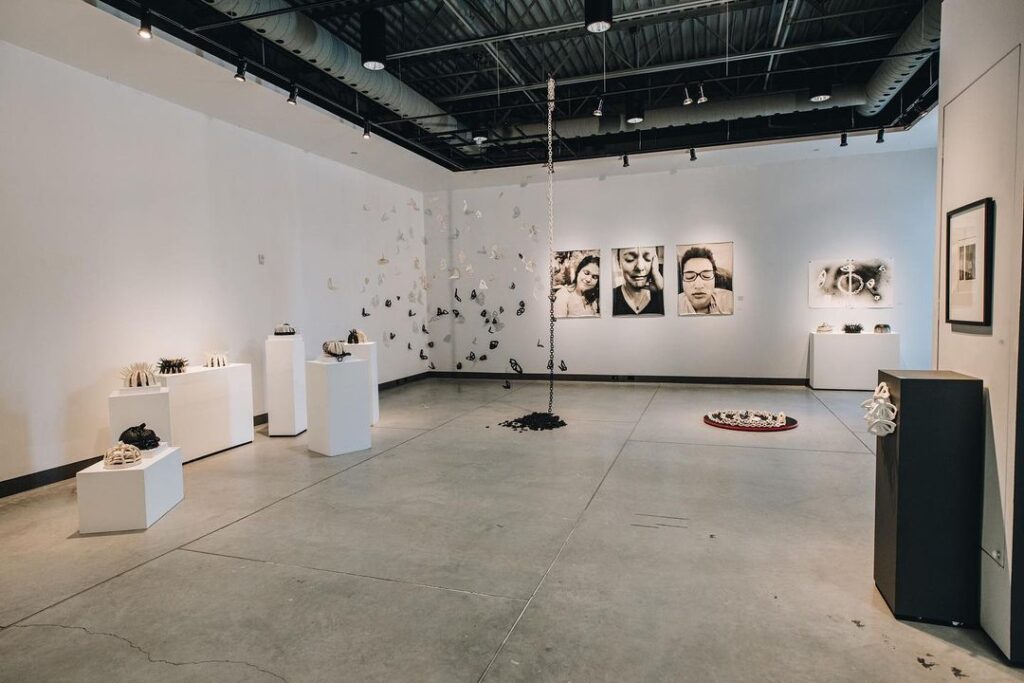
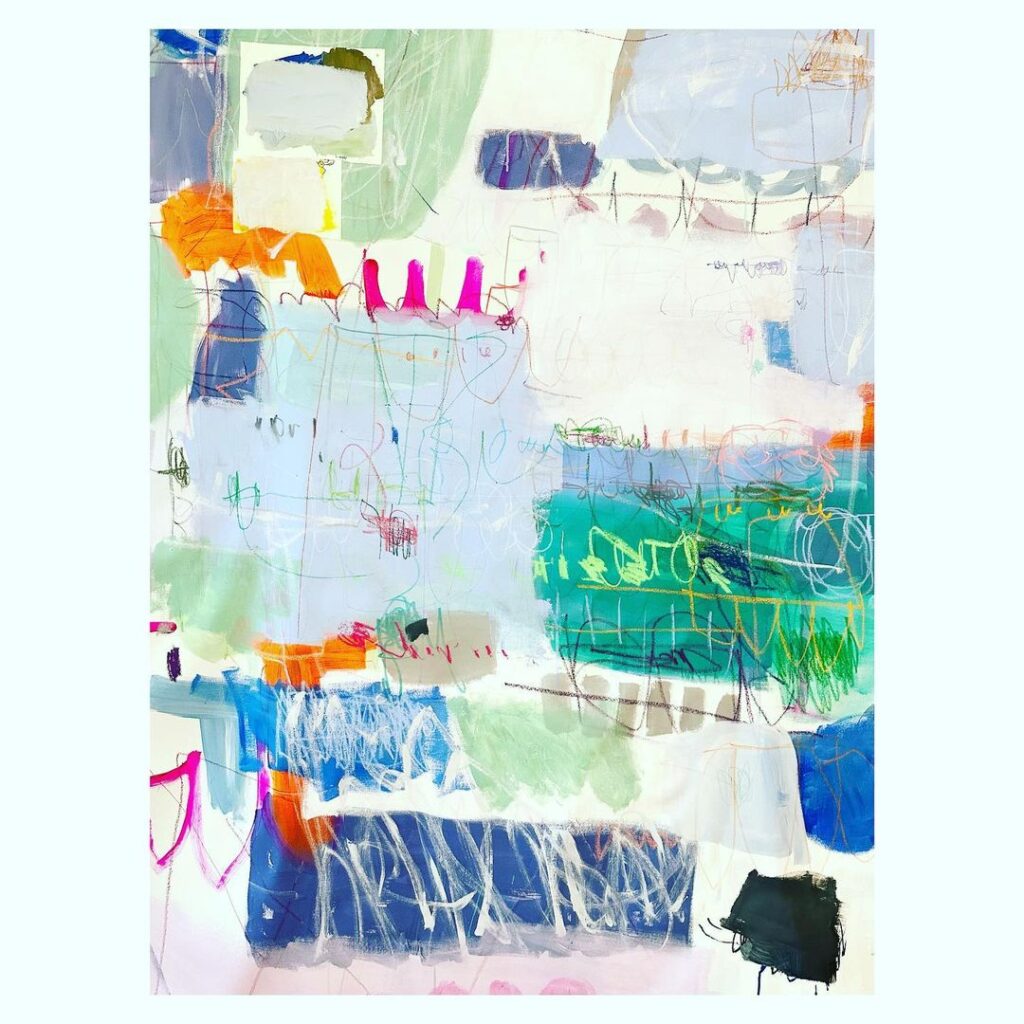


Comments 16